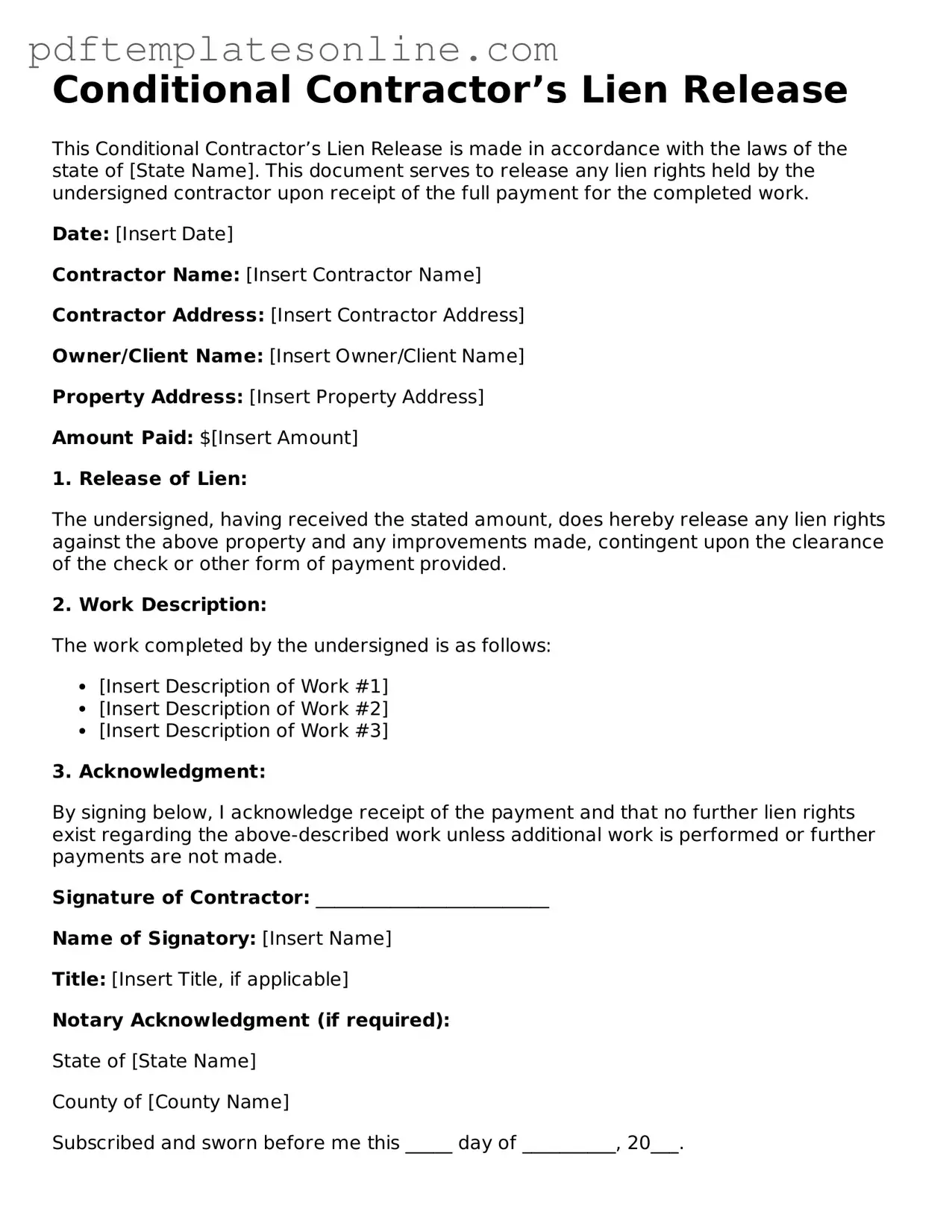When filling out the Conditional Contractor’s Lien Release form, it is important to ensure accuracy and completeness. One common mistake is failing to include all necessary information. This form typically requires details such as the name of the contractor, the property address, and the amount being released. Omitting any of these details can lead to complications later on.
Another frequent error involves using incorrect or inconsistent names. For instance, if the contractor’s name appears differently on other documents, this inconsistency can create confusion. Always double-check that the names match across all related paperwork to avoid potential disputes.
Many individuals neglect to date the form properly. A missing or incorrect date can render the release invalid. It is essential to ensure that the date reflects when the form was completed and signed. This small detail can have significant implications for the legal standing of the release.
People often overlook the importance of signatures. The form must be signed by the appropriate parties. If a contractor or authorized representative fails to sign, the release may not be enforceable. Ensure that all required signatures are present before submitting the form.
Additionally, some individuals forget to provide a clear description of the work completed. This section is crucial, as it outlines what the lien release pertains to. A vague description can lead to misunderstandings, so clarity is key.
It is also common for individuals to skip the section regarding the payment details. This includes specifying the amount being released and confirming that payment has been received. Leaving this information out can cause disputes over what has been paid and what remains owed.
Another mistake is not keeping a copy of the completed form. After submission, it is wise to retain a copy for personal records. This documentation can be invaluable if any questions arise in the future regarding the release.
Lastly, some people fail to verify that the form is being submitted to the correct party. Ensuring that the release is sent to the appropriate lien claimant or property owner is crucial. Sending it to the wrong individual can delay the process and create unnecessary complications.
